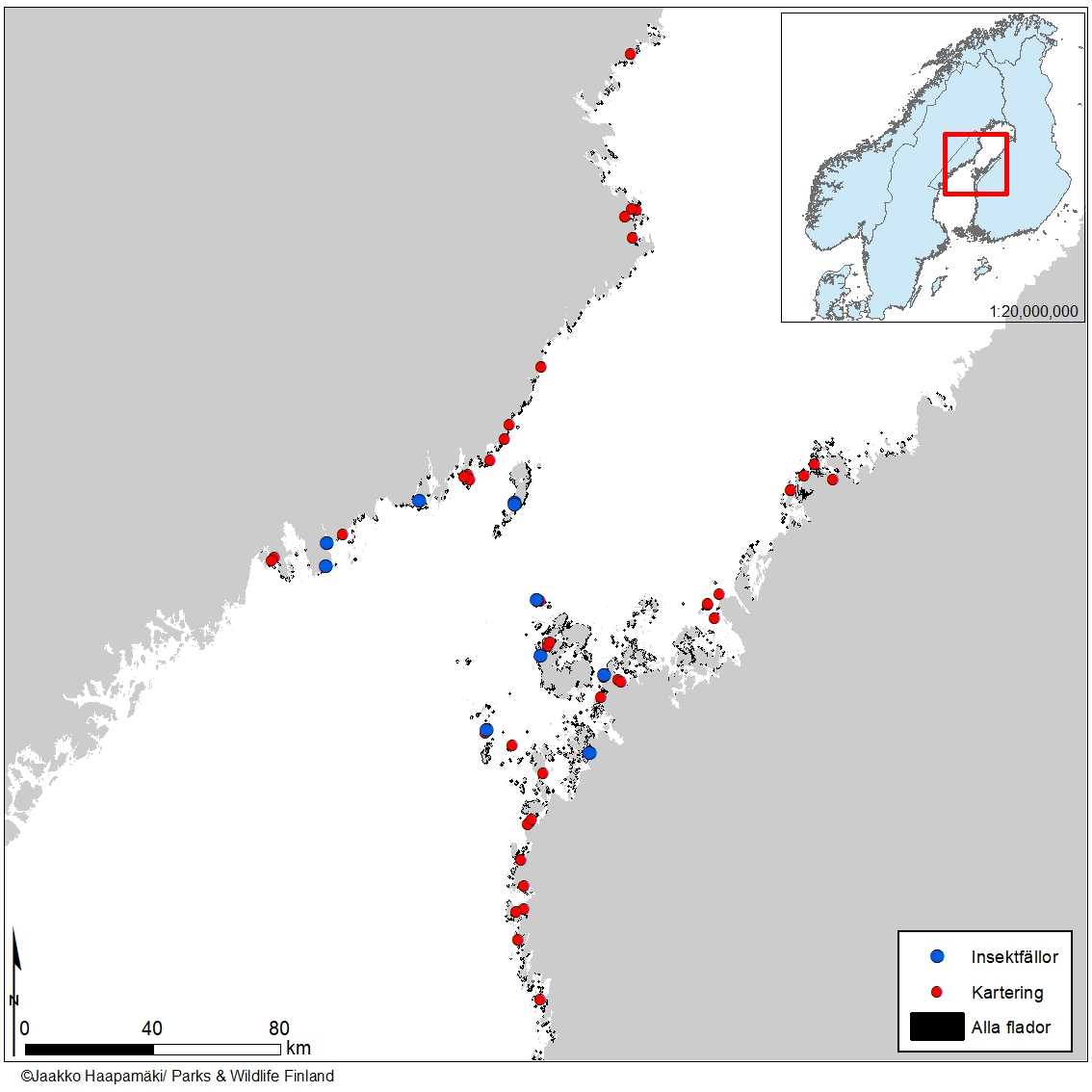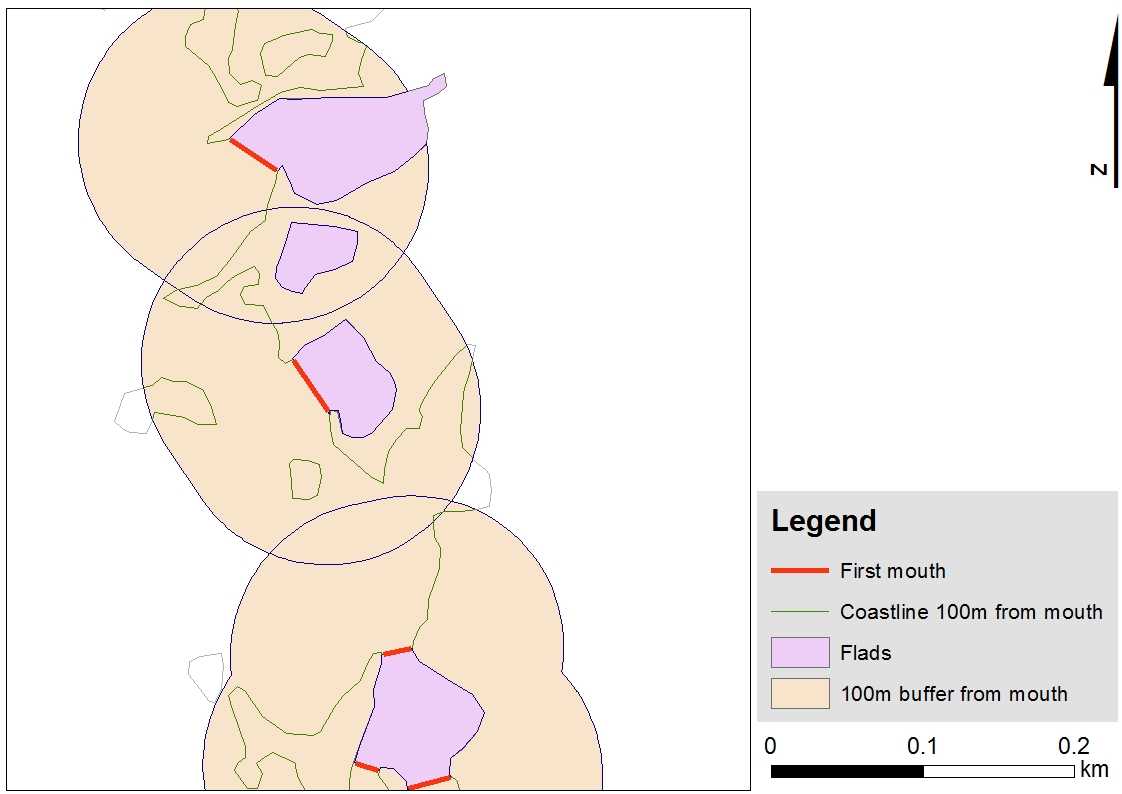GIS
GIS
GIS, that stands for geographical information systems, means a way of storing and presenting geographical information with the help of a computer. A GIS-program is able to demonstrate geographical information and it is possible to calculate areas on objects or use simulating data that has been collected on other occasions.
First steps in the project were to identify all flads in the Kvarken region. This was done by using aerial photography. The work was pretty time consuming, but a better option than visiting all the flads in the area. In the end there were over 2500 objects that could be classified as some kind of a flad.
It is impossible to visit 2500 flads and that is why a smaller amount was chosen for closer investigation. To be able to get the most representing flads, objects were chosen that differ from each other in different ways. Criteria such as location on the coast, area and exposition (effect of waves and wind), but also the size of the threshold were used. 33 flads in Finland and 18 in Sweden were chosen. On 10 different locations also bats and insects were surveyed.
The thought behind this is, that by surveying a small amount of flads of a certain type, the witheld information could then be interpolated on other flads with equal variables. One such variable is salinity, that can directly affect the flads condition and species distribution. Models that show salinity exist but they are mostly applicable for oceans and not for areas that are more or less isolated from it. It is possible to deduce the salinity of a flad by comparing the size of the threshold, which affects income of salty water, and the area of the catchment basin, that affects the amount of freshwater entering the flad (Picture 2). Also the length of the shoreline around the threshold has been calculated to obtain information about the exposition (Picture 3).
Picture 1. Examples of what GIS work includes. By combining different map layers, you achieve interesting features. The upper row shows a terrain map and an aerial photograph that are used to identify flads and their development stages. Topography is used in the row in the middle to calculate catchment areas for separate flads. The last picture shows the combination.
Map 1: All bays that were chosen for vegetation surveys and insect and bats surveys.
Picture 2: Five flads and their catchment basins. If there are several flads in a chain shall their combined catchment basins be calculated (on the right). Bild 2:
Picture 3: The threshold on three flads and a 100m buffer to calculate the length of the shoreline inside the area. The length of the shoreline corresponds to the exposition.



